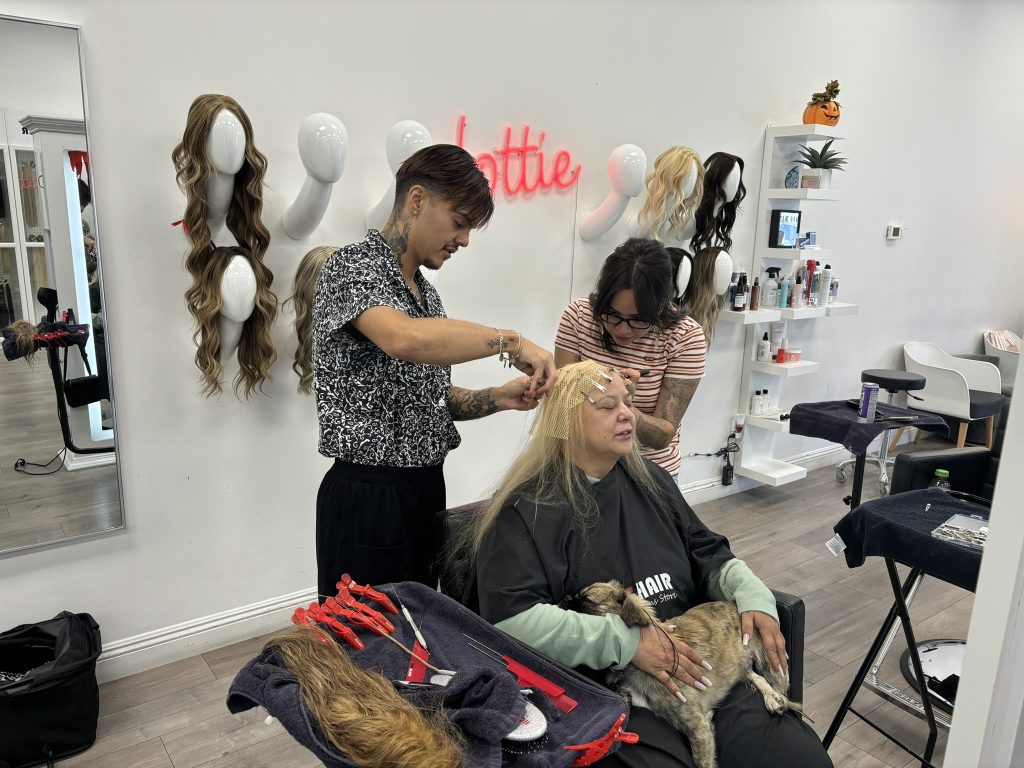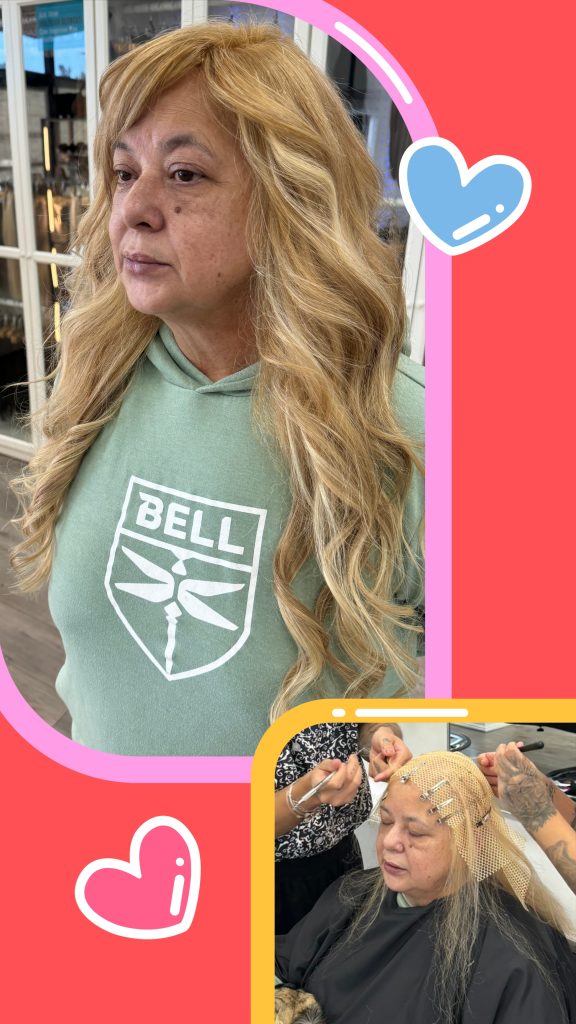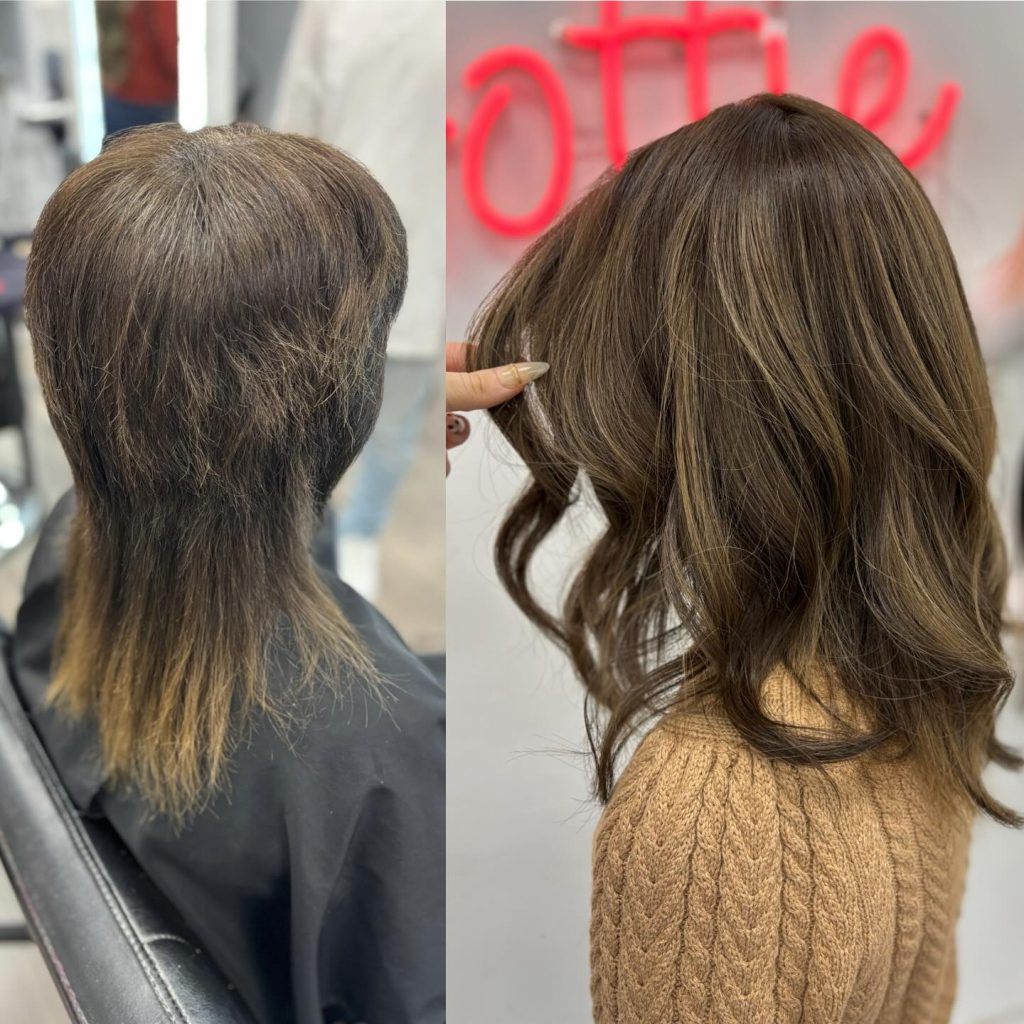1500+ ★★★★★ REVIEWS
Mesh Integration Hair Systems: A Non-Surgical Approach to Fuller Hair

In the realm of hair replacement, mesh integration systems have emerged as a pinnacle of innovation, providing not just a solution but a transformation for those dealing with hair loss. This comprehensive guide delves deep into the world of mesh integration hair systems, offering insights from selection to maintenance, ensuring you get the most out of your investment in time, comfort, and aesthetics.
Table of Contents

What is a Mesh Integration Hair System?
A mesh integration hair system is essentially a sophisticated form of hairpiece where a thin, often invisible, mesh or lace base is used to integrate with your existing hair or directly onto your scalp. This mesh serves as the foundation onto which real or synthetic hair is meticulously attached, either by hand-knotting, machine-sewing, or other methods, to create the illusion of a full head of hair.
Key Features:
- Breathability: The mesh material allows for significant air flow which makes it comfortable for extended wear.
- Natural Look and Feel: When expertly crafted, the transition between your existing hair and the system is virtually undetectable.
- Customization: From hair texture, color, and density to the shape and size of the mesh, everything can be tailored to match your natural hair perfectly.
- Durability: With proper care, a well-made mesh integration system can last from several months to over a year.
- Versatility: Suitable for various degrees of hair loss, from minimal thinning to near-total baldness.
Understanding the Components
- Mesh Base: Made from materials like lace, poly, or monofilament, this base can be transparent, flesh-toned, or slightly tinted to match your scalp color.
- Hair Type: Choice between human hair, which offers the most natural look and feel, or synthetic hair, which can be more affordable but less versatile in styling.
- Attachment Methods:
- Tape or Adhesive: Offers flexibility for temporary wear, allowing for easy removal and reapplication.
- Micro Rings, Clips, or Sewing: For a semi-permanent or more secure fit, these methods integrate the system with your natural hair.

Step-by-Step Guide to Getting a Mesh Integration Hair System
1. Consultation
- Assessment: Your hair loss pattern, hair color, texture, and personal style preferences are evaluated.
- Expectations: Discuss what you aim to achieve with the system, including lifestyle considerations that might affect your choice (e.g., swimming, sports).
2. Design Phase
- Customization: Here, decisions are made on hair type, density, length, color, and wave/curl pattern. The base’s shape and size are also determined.
- Prototype: Some providers might offer a mock-up or a sample piece for you to see and feel before finalizing the design.
3. Production
- Crafting the System: This involves cutting, coloring, and attaching hair to the mesh base. The process can take several weeks, depending on complexity.
4. Installation
- Preparation: Your existing hair is cleaned, possibly trimmed or lightened at the roots to enhance adhesion.
- Fitting: The system is carefully placed on your head, ensuring alignment and comfort.
- Securing: Depending on the method, adhesives, tapes, or mechanical attachments are used to hold the system in place.
5. Styling
- Initial Styling: Your stylist will cut and style the system to blend seamlessly with your natural hair, offering you tips on maintenance.

Choosing the Right Mesh Integration System
- Material of the Base: Monofilament, lace, or poly – each has its advantages in terms of breathability, durability, and natural appearance.
- Human vs. Synthetic Hair: Human hair provides a more natural feel and versatility in styling but requires more maintenance. Synthetic hair is easier to maintain but might not look as natural under scrutiny.
- Density and Coverage: This should match or complement your existing hair density for a seamless look.
- Lifespan: Consider how long you expect the system to last, as this impacts both cost and maintenance.
- Cost: Prices can vary widely based on customization, material quality, and the complexity of the design. Expect to invest anywhere from a few hundred to several thousand dollars for a top-quality system.
Maintenance and Care
Daily Care:
- Brushing: Use a soft brush to gently detangle, starting from the ends moving up to avoid stress on the attachment points.
- Washing:
- Use sulfate-free, gentle shampoos and conditioners.
- Avoid excessive washing to prevent loosening the knots or base.
- Sleeping: Consider wrapping your hair or using a silk pillowcase to reduce friction and tangling.
Routine Maintenance:
- Cleaning: Depending on use, clean the system every 1-2 weeks. Support the base when washing to avoid stretching.
- Styling:
- Limit heat styling to prevent damage to both natural and integrated hair.
- Use styling products that are gentle on hair systems.
- Adhesive Maintenance: If using adhesives, regular cleaning of the scalp and replacing the adhesive is crucial.
Professional Maintenance:
- Check-ups: Regular visits to your hair specialist for adjustments, reattachment, or minor repairs are advisable.
- Replacement: Over time, parts of the system might need replacing due to wear and tear.
Pros and Cons
Pros:
- Natural Appearance: When done right, it’s hard to distinguish from natural hair.
- Comfort: The breathable mesh minimizes scalp irritation.
- Customization: Tailored to your specific needs and aesthetic.
- Confidence Boost: Can significantly improve self-esteem and social interactions.
Cons:
- Cost: Initial and ongoing expenses can be high.
- Maintenance: Requires more care than natural hair, including regular professional visits.
- Time: The process from consultation to installation can be lengthy.

Troubleshooting Common Issues
- Lifting: If the system begins to lift, check for oil or sweat accumulation. Reapply adhesive or adjust clips as needed.
- Tangling: Regular gentle brushing and avoiding harsh chemicals or extreme heat can help.
- Color Fading: Use color-safe products and consider UV protection for prolonged outdoor activities.
- Shedding: This is normal but excessive shedding might indicate poor quality or improper care.
Ethical and Psychological Considerations
- Body Image: Integrating a hair system can profoundly affect one’s self-image. It’s vital to approach this with a positive mindset and realistic expectations.
- Ethical Sourcing: For human hair systems, ensure ethical practices in hair sourcing to support fair labor conditions.
- Psychological Support: Sometimes, dealing with hair loss might require psychological support alongside physical solutions.
When to Replace or Repair
- Signs to Look For: Thinning areas, visible base, loss of curl or wave pattern, or if the system feels less secure.
- Decision Making: Regular consultations with your provider can help decide whether to repair or opt for a new system.
Conclusion
Mesh integration hair systems are not just about covering bald spots; they’re about restoring confidence, providing comfort, and enabling a lifestyle where hair loss isn’t a daily concern. With the right approach to selection, installation, and maintenance, you can enjoy the benefits of a full, natural-looking head of hair. Remember, this journey is highly personal; what works for one individual might not for another, so patience, research, and consultation with experts are key.
This guide aims to equip you with the knowledge to make informed decisions, ensuring your experience with mesh integration hair systems is as rewarding and seamless as possible. Remember, the investment in your hair is an investment in your overall well-being, so choose wisely and care accordingly.
FAQ about Mesh Integration Hair Systems
1. What is a mesh integration hair system?
A mesh integration hair system is a revolutionary hair replacement solution that combines a breathable mesh or lace base with real or synthetic hair. This system integrates seamlessly with your natural hair to provide volume, thickness, and coverage for hair loss or thinning.
2. How does a mesh integration hair system work?
The mesh system uses a thin, often transparent mesh material that attaches securely to your scalp or natural hair. Hair is then meticulously tied to the mesh, blending perfectly with your existing hair for a natural, fuller look.
3. What are the key benefits of a mesh integration system?
- Natural Appearance: Creates a seamless, natural look that is virtually undetectable.
- Breathability: The mesh allows airflow to your scalp, ensuring comfort even with long-term wear.
- Customization: Tailored to match your exact hair texture, color, and style.
- Durability: With proper care, a mesh system can last for several months to over a year.
4. Is a mesh integration hair system suitable for everyone?
Yes, mesh integration systems can be customized for individuals with various levels of hair loss, from mild thinning to significant baldness. They can be a great option for those seeking a non-invasive solution to hair loss.
5. How long does it take to install a mesh integration system?
The installation process generally takes several hours, as it involves detailed work to ensure a perfect fit and blend with your natural hair. This includes assessment, design, production, and final fitting.
6. How do I care for my mesh integration system?
Proper care includes daily brushing with a soft brush, washing with sulfate-free shampoo, and avoiding excessive heat styling. For long-term maintenance, it’s important to visit your stylist regularly for adjustments and to ensure that the system remains secure.
7. How often should I replace or repair my mesh integration system?
Depending on usage and maintenance, a mesh integration system can last anywhere from 6 months to a year or more. Routine check-ups and maintenance can help extend the lifespan of your system. When necessary, replacement of hair sections or the mesh base itself might be required.
8. How do I choose the right mesh integration system?
Factors to consider include the material of the base (lace, monofilament, or poly), the type of hair (human or synthetic), the system’s density, and your budget. It’s also essential to consider your lifestyle and specific needs for wearability and maintenance.
9. What are the costs associated with a mesh integration system?
Prices vary based on the level of customization, materials used, and the complexity of the design. Expect to invest a few hundred to a few thousand dollars, depending on the quality and longevity of the system.
10. Are there any risks or drawbacks to mesh integration systems?
Some potential drawbacks include the initial high cost and the need for ongoing maintenance. It can also be time-consuming, as the fitting and customization process can take several weeks.
11. Can I style my mesh integration system like my natural hair?
Yes, mesh systems are versatile and can be styled in various ways using heat tools (if using human hair). You can curl, straighten, or cut the hair to suit your personal style.
You must be logged in to post a comment.